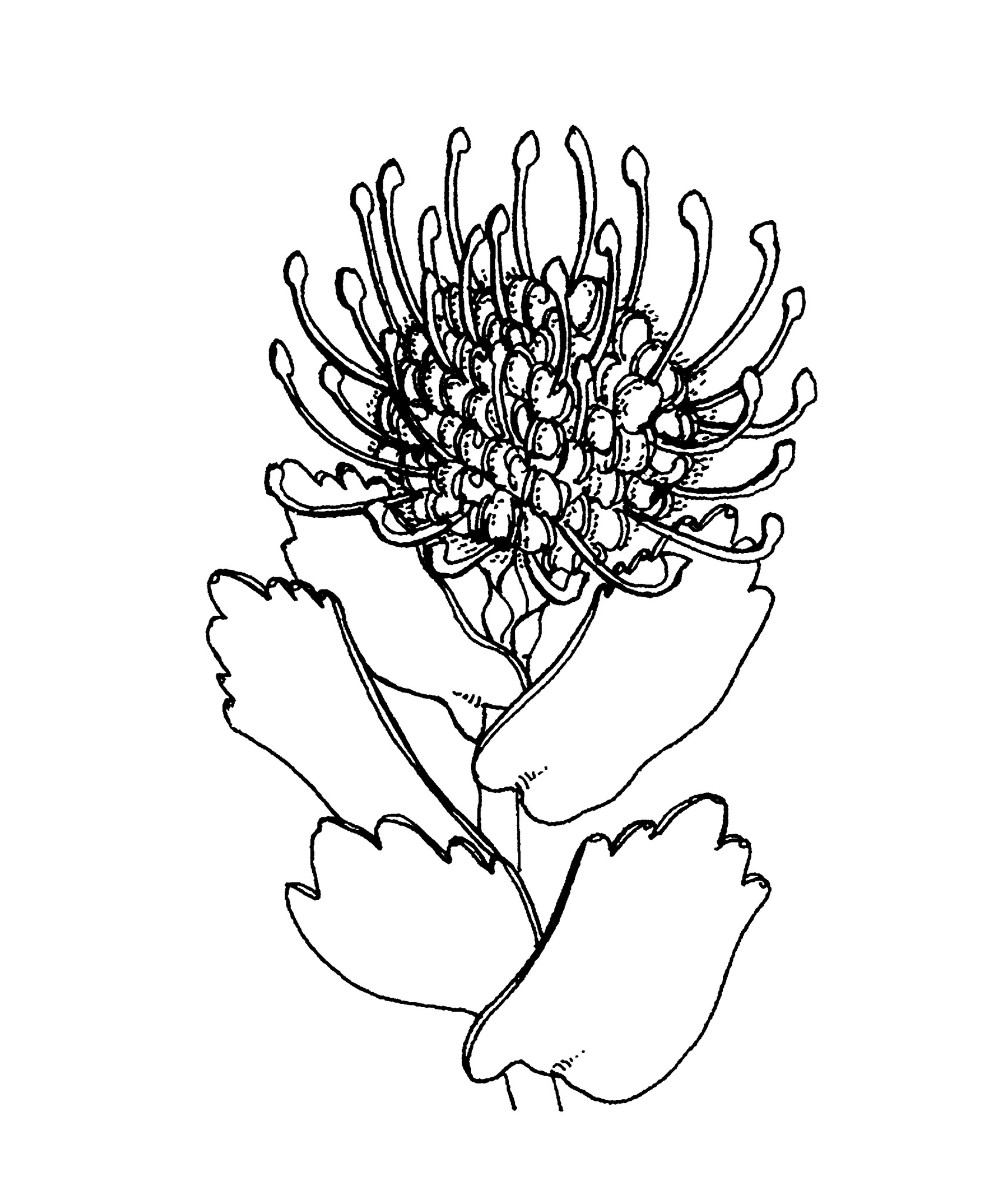
Greek leucos — white, sperma — seed
Shrubs or small trees. Leaves simple, alternate, leathery, entire or with a few teeth, mostly at the tip. Flower clusters mostly axillary, solitary or in groups of 2-4 (rarely to 10), the bracts small and inconspicuous. Flowers with 3 upper lobes fused to form a sheath for the anthers, the lower lobe elongating but still fused at the base. Styles long and showy, giving a pincushion appearance. Fruit a brownish nut embedded in the floral remains.
Generally grown for the attractive flower clusters.
47 species from S Africa.
Mostly semi-hardwood cuttings.
Popular florists' flowers.
Flower heads mostly axillary, with small inconspicuous bracts (cf. Protea); flowers with the 3 upper lobes fused to form a sheath, the 4th elongating but fused at the base; styles prominent and protruding; fruits nut-like.
Rourke (1972).
Source: (2002). Proteaceae. In: . Horticultural Flora of South-eastern Australia. Volume 3. Flowering plants. Dicotyledons. Part 2. The identification of garden and cultivated plants. University of New South Wales Press.

CARNIVAL This is a registered trademark used for a series of 3 Proteaflora cultivars: 'Copper', 'Dawn' and 'Sunshine'.
MARDI GRAS is a registered trademark used for the 2 cultivars, 'Veldfire' and 'Baby Flowers'.
L. cordifolium _ l. glabrum. Flower clusters orange-red with yellow styles; early to mid-summer. Raised by Proteaflora, Australia, and int. 1988.
L. cordifolium × L. tottum. Flower heads pinkish red, produced in early summer. Raised by Proteaflora and int. 1980. Syn. 'Caroline'.
L. glabrum × L. tottum. Flower cluster multi-coloured, salmon pink with purplish red striping, 9.5-11 cm wide; Sept-Oct. Originated at the Vegetable and Ornamental Plant Institute, s Africa, in 1974, selected in 1980, int. in 1984. Syn. 'Bluebeard'.
L. glabrum 'Helderfontein' × L. lineare 'Diadem'. Flower cluster deep orangered, 10-11 cm wide; Sept-Oct. Originated at the Vegetable and Ornamental Plant Institute, S Africa, in 1979, selected in 1984, int. c.1993.
L. conocarpodendron × L. glabrum. Flower cluster yellow with orange perianth ribbons. Originated and named in s Africa by H. Wood and int. by M. Jackson in 1979.